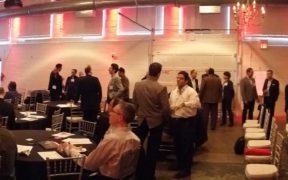Category: Events

Big plans for us next week, we are off to Washington D.C to one of the Wi-Fi industry’s largest conferences, Wi-Fi NOW in Washington D.C. Have you ever been to one? I was at the London show back in September and it was a really great way to meet new industry leaders, and learn all about all […]

At the WLPC Conference in Phoenix, 2017 (a great conference for Wi-Fi professionals) our Director of Research – Vladan, gave a talk called ‘Algorithms Behind the Heatmaps: A Deeper Dive’ on the different type of prediction algorithms in our iBwave Wi-Fi planning and design software. Afterward, we got a few comments from attendees saying they didn’t realize that not all […]

Earlier this month we were in Toronto for our annual North American User Group. As always we had an action packed day planned with a panel discussion, interactive sessions, presentations and case studies. To top it all off, we lined up special sneak peeks into what’s coming in 2016 complete with live demos. View of […]
